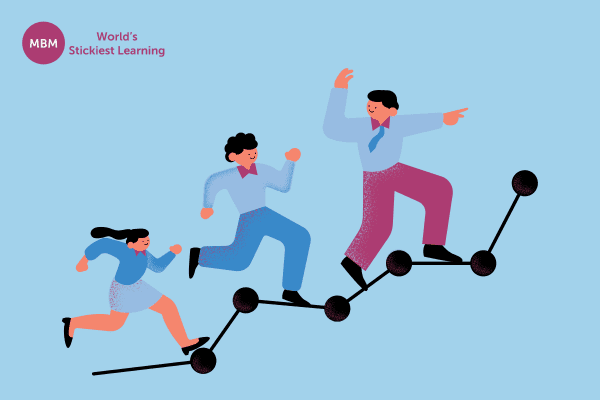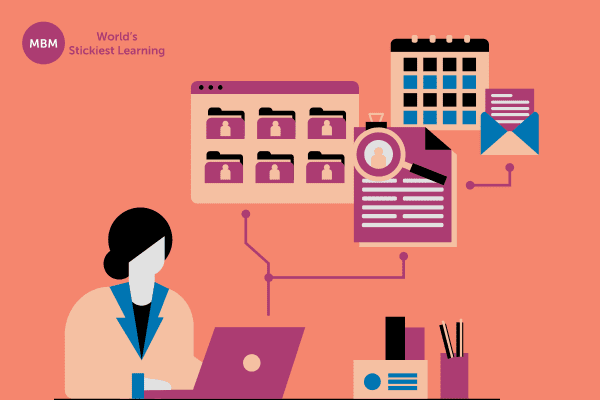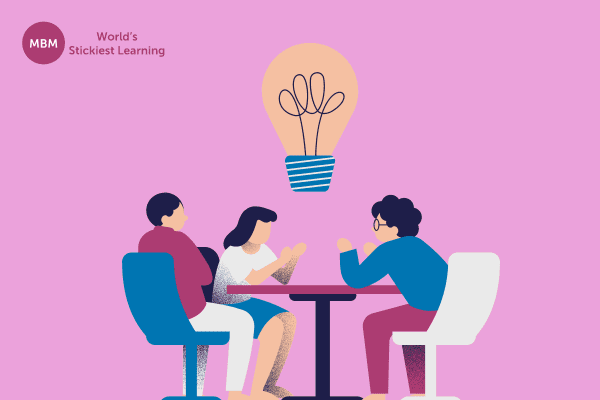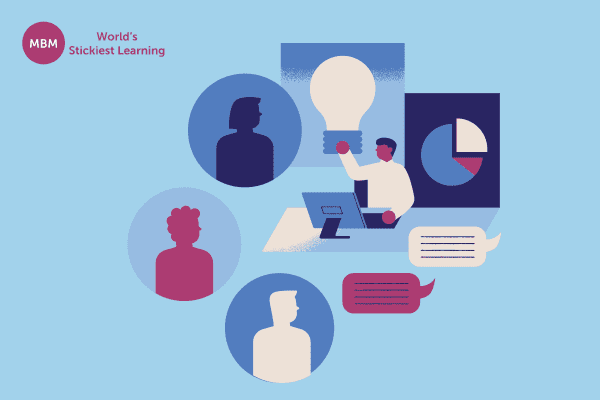Empower Your Teams With Learning Techniques for Peak Performance
In today’s digitally-driven world, remote teams are becoming increasingly prevalent, necessitating a shift in how learning and development are approached. But note that innovative learning techniques tailored for remote environments are not just beneficial. Actually, they are essential for maintaining team effectiveness and individual growth.
Hence, this article explores various strategies that reimagine traditional training and foster a culture of continuous learning among dispersed teams. From virtual reality to microlearning, these methodologies address the unique challenges of remote setups, ensuring that every team member remains engaged, motivated, and well-equipped to thrive in a virtual workspace.
As remote work becomes the norm, the need for dynamic and effective learning techniques grows. Thus traditional methods, once effective in office environments, now require transformation to suit digital platforms where personal interaction is limited.
To start, we will dive deep into how innovative learning techniques can meet these new demands. Thus, ensuring that remote teams are not only adapting but also thriving in their developmental journeys. By focusing on these evolving needs, organisations can enhance productivity and foster a resilient and adaptable workforce.
Adapting Traditional Training to Virtual Formats

-
Virtual Reality: Bridging the Gap in Remote Training
The transition from in-person to virtual learning environments has become a cornerstone in the evolution of workplace training. Thankfully, embracing technologies such as Virtual Reality (VR) and interactive webinars can revolutionise the learning experience for remote teams.
VR offers a simulated environment for hands-on practice, which is perfect for developing technical skills without physical constraints. Meanwhile, interactive webinars facilitate real-time engagement and feedback, enhancing the development of soft skills through direct communication and interactive activities.
In a VR environment, the following learning techniques can be particularly effective:
1. Immersive Simulations:
This technique uses VR to simulate real-world environments where learners can practice and refine skills in a risk-free setting. For instance, medical students performing surgeries or pilots operating flight simulators.
2. Scenario-based Learning:
VR can create detailed scenarios for learners to navigate, make decisions and experience consequences in a controlled, immersive way. Notably, this can be especially useful for training in fields like emergency response or customer service.

-
Interactive Webinars: Engaging the Remote Learner
Think of a virtual office space. It’s recreated from scratch where participants can interact through avatars as if they were physically present.
The integration of such immersive tools in learning platforms not only enhances the understanding of complex concepts. It also maintains the human element often missed in remote interactions. This approach allows companies to conduct realistic training scenarios and team-building exercises without geographical constraints. Thus pushing the boundaries of what remote training can achieve.
For interactive webinars, these learning techniques can be highly effective:
1. Polls and Quizzes:
Utilising real-time polls or quizzes during webinars helps keep participants engaged and provides immediate feedback on their understanding of the material.
2. Breakout Sessions:
This is dividing participants into smaller groups for discussion or problem-solving tasks. In essence, this allows for more interaction and personalised learning experiences within the webinar environment.
Leveraging Technology for Continuous Learning

-
Embracing Learning Management Systems
Learning Management Systems (LMS) are pivotal in facilitating a seamless and continuous learning experience for remote teams. An LMS provides a structured platform where courses can be created, managed, and delivered entirely online. Furthermore, it supports a diverse range of multimedia content such as videos, podcasts, and interactive modules.
This centralised system allows for tracking progress, administering assessments, and tailoring learning paths to meet the individual needs of team members. Not to mention ensuring that each member can learn at their own pace while still adhering to organisational goals.
In a Learning Management System (LMS), these learning techniques can be particularly useful:
1. Adaptive Learning:
This technique tailors the educational content to the learner’s knowledge level, using algorithms to adjust the complexity of tasks as the learner progresses. All in all, this personalisation helps maximise learning efficiency and engagement.
2. Spaced Repetition:
This involves delivering content over spaced intervals to help reinforce knowledge and improve memory retention. Additionally, an LMS can automate this process, scheduling the review of previously learned materials at optimal times.
-
Gamification: Enhancing Engagement Through Play
Gamification transforms the learning experience by integrating game-design elements into educational activities. This approach uses mechanisms like points, badges, and leaderboards to drive engagement, competition, and motivation.
By making learning more interactive and fun, gamification helps to sustain attention and commitment among remote teams. Thus, encouraging teams to delve deeper into their learning materials and achieve higher levels of mastery in their respective fields.
For gamification, these learning techniques can enhance the learning experience:
1. Leaderboards:
This technique involves ranking learners based on their achievements and progress. Thereby fostering a competitive environment that motivates individuals to engage more deeply with the content.
2. Achievement Badges:
Basically, this involves rewarding learners with badges for completing specific challenges or reaching milestones. Moreover, this can increase motivation and provide tangible evidence of skills and accomplishments.
Social Learning and Collaboration Platforms

-
Enhancing Team Connectivity Through Social Learning Platforms
Notably, social learning platforms revolutionise how knowledge is shared and community is built among remote teams. Specifically, these platforms provide spaces where team members can interact, share insights, and collaborate on projects in real time.
Moreover, they simulate the communal aspects of a physical office, enabling continuous engagement and fostering a culture of collective learning and problem-solving. This environment is crucial for maintaining team cohesion and ensuring that everyone feels connected and valued, regardless of their physical location.
For enhancing team connectivity through social learning platforms, these learning techniques can be very effective:
1. Peer Review:
This technique allows learners to review and give feedback on each other’s assignments or projects. Also, it promotes learning from peers and fosters a collaborative environment.
2. Discussion Forums:
Encouraging the use of forums where team members can post questions, share insights, and discuss topics related to their learning modules. Moreover, this builds a community of learning and helps in the collective growth of knowledge within the team.
-
Building Collaborative Communities: The Role of Virtual Platforms
The adoption of social learning platforms extends beyond mere communication. Actually, they play a crucial role in cultivating a sense of community among remote workers.
These platforms enable team members to not only exchange knowledge and skills but also support each other’s growth through discussions, peer feedback, and shared learning experiences.
By fostering a collaborative atmosphere, these tools help maintain the camaraderie and connectivity that are often challenging to replicate in a virtual setting. Thus, ensuring that team spirit thrives despite physical distances.
Microlearning for Skill Development

-
Microlearning: Maximising Efficiency in Skill Acquisition
In essence, Microlearning is a strategic approach that breaks down complex information into manageable, bite-sized pieces, making it particularly effective for remote teams with diverse schedules.
This method allows for focused, short-term learning sessions that are easy to fit into the busy workflows of remote workers. Thus facilitating immediate application and better retention of knowledge.
These brief, targeted learning experiences are ideal for quickly upskilling team members and ensuring they can integrate new skills into their daily tasks without overwhelming them.
-
Integrating Microlearning into Daily Routines
This section explores how microlearning can be seamlessly incorporated into the daily routines of remote employees. By designing microlearning modules that are accessible and timely, organisations can ensure that learning becomes a natural part of the workday. This integration helps in reinforcing new skills and knowledge regularly. Thus allowing for gradual improvement and consistent application in real-world tasks. Which is crucial for long-term retention and efficacy in a remote work environment.
Feedback and Coaching in a Remote Setting

-
Enhancing Remote Engagement Through Effective Coaching
Effective coaching and feedback are integral to the growth and development of remote teams. This process involves establishing clear communication channels where coaches and managers can provide constructive feedback and guidance.
Using tools such as video conferencing facilitates face-to-face interactions, making the feedback more personal and impactful. This direct approach helps in addressing individual challenges and reinforces positive behaviours in a timely manner. Note this is crucial for the remote workforce’s continuous improvement and engagement.
So for the technique of Microlearning, here are a couple of learning techniques that work well:
1. Learning Nuggets:
Creating short, focused content that learners can consume in 5-10 minutes. These can cover a single concept or skill, allowing for quick comprehension and immediate application.
2. Interactive Infographics:
Utilising visual content that learners can interact with to understand complex data or processes quickly. These are particularly effective for visual learners and can make complex information accessible and memorable.
-
Strategic Use of Video Conferencing for Personalised Feedback
This section introduces the concept of utilising video conferencing tools to deliver personalised coaching and feedback in a remote setting. Such tools allow managers and coaches to provide real-time, face-to-face feedback, which is essential for effective communication and building trust. This method also ensures that feedback is tailored to the specific needs and circumstances of each team member, enhancing its relevance and impact.
Now for this video conferencing, here are a couple of learning techniques that would be effective:
1. One-on-one Coaching Sessions:
Utilising video conferencing for personalised coaching sessions allows for detailed, individualised discussions on performance, goals, and professional development.
2. Real-time Feedback During Tasks:
Implementing live video sessions where learners perform tasks and receive immediate feedback. Basically, this helps in correcting mistakes on the spot and reinforces learning through practice.
Conclusion on Learning Techniques

Finally, it’s clear that the adoption of innovative learning techniques for remote teams is more than a trend. In fact, it’s a necessity in today’s digital landscape.
Moreover, this exploration across various strategies has underscored the potential of technologies and methodologies not only to overcome the barriers of distance. But also to enhance team engagement, learning efficiency, and overall productivity in remote settings.
Additionally, embracing innovative learning techniques ensures that remote teams are not only equipped to handle today’s challenges but are also poised for future growth.
Furthermore, this article has highlighted how such innovations can dramatically transform the learning landscape. Thus making professional development more accessible, engaging, and effective.
As organisations continue to leverage these advanced strategies, they forge a path toward a more adaptive and skilled workforce, prepared to thrive in an increasingly digital world.




